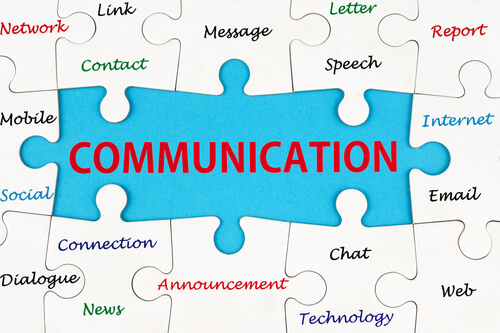
by Birch Marketing | Nov 26, 2015 | News
Some Birch Marketing clients refer to us as their virtual marketing director, whilst other people ask whether this means that we don’t actually exist! Whatever you like to call us, part-time marketing directors provide an excellent solution for ambitious small and mid-sized business looking for growth. They normally have proven performance in high performing, blue-chip organisations and have gone on to work with smaller businesses, where they get the satisfaction of making a real difference. Strong strategic and tactical skills, combined with a commercial focus, result in impactful results. Being able to develop a strategy and implement it ensures continuity and the best results for the client. Experienced professionals are able to hit the ground running and should be happy rolling up their sleeves to get things done. Virtual marketing directors are focused on delivering results and look at every company from the view of the potential customer when planning and implementing an effective strategy for the future. This is likely to include work on the value proposition, brand building and messaging, as well as a review of the return from marketing activities currently in place. The part-time approach delivers great value. The individuals work directly with business owners and directors as part of the senior management team on an ongoing basis, typically 1 day per week. They deliver real impact, at a fraction of the cost of full-time resource of the same calibre and it is a low risk solution, with no lengthy tie-ins or retainers. You simply pay for the support that you require, when you need it, with no additional costs such as recruitment, national insurance...

by Birch Marketing | Oct 30, 2015 | News
Most business people today have a LinkedIn profile, and many utilise it to promote their skills and experience with their next job in mind. Far fewer use it to effectively promote and grow their own business, or the company they work for, which is a missed opportunity with so many decision makers using this social network on a daily basis. Here are a few tips to help you use LinkedIn to promote your business. LinkedIn is great for people and businesses wishing to build stronger brands. You can associate your personal profile with your company page and share images, videos, links and presentations, to make the pages more interesting and informative. Ensure that your personal profile contains a professional headshot and including your company logo will help to build visual awareness of your brand and what it stands for. You can also post informative articles, which can be seen by other users, helping you to engage in conversations around your areas of expertise and further strengthen your brand and its proposition. Clear, well written, LinkedIn profiles that concisely describe your skills, expertise, and the value proposition of your business are important to give viewers that all-important first impression. Clear calls to action and contact details are equally important to ensure that interested people are easily able to reach you. The summary section is particularly important as it allows you to speak directly to your audience and tell them about you, your skills and your company. The use of keywords in profiles helps you rank higher in search results, making it more likely that you will be found by prospective clients...

by Birch Marketing | Jun 15, 2015 | News
The identification and selection of market segments is one of the most important strategic decisions facing industrial, technology and service based B2B companies. The choice of market segment(s) to pursue is the key starting point for developing overall strategies and business plans but I believe it is often not done well. A market segment should be a group of clients or users who have similar requirements, who will respond in a similar way to a given offer. The present and future needs of the segment allow you to appraise your company’s capabilities or strengths and weaknesses, and compare your offer against competitive suppliers. This will then enable you to tailor your business proposition to the specific needs of the clients in the segment, if you decide to pursue it. Unfortunately, market segmentation is frequently not performed well. • Companies often do not have all the facts about the needs of the market segments and future trends. This can lead to assumptions which result in them missing opportunities or being caught off base by unexpected developments. • Salespeople tend to segment based on the size of existing customers, classing the largest as key accounts, irrespective of their requirements, growth or profitability. • Product and manufacturing driven companies often find it difficult to think in terms of market segments, as they are so focussed on their product’s composition, manufacturing method and technical features. Product lines get grouped into “segments”, rather than focussing on the external market and the benefits that their product can bring. • There is a danger in thinking too broad or too narrow. Large companies often segment too broadly, so the needs...

by Birch Marketing | May 20, 2015 | News
The Facilities Management sector has grown significantly over the past 20 years, but brand awareness amongst the public is limited. Many people are not aware of what the companies do, and the value that they bring to day-to-day life. There are probably a number of reasons for this and I have focussed on two that I consider to be key below. Does the sector have a clear identity? By that I mean, is there a clearly defined brand purpose and proposition which is consistently communicated? From my perspective, I think that the messages that we send out are often muddled, both in terms of what we do, but also the value we deliver. There are often overlaps of FM with property, IT, HR and then there is the question of single services (eg cleaning) versus facilities management versus total outsourcing. Is there any wonder that many of the general public are confused about what facilities management really is? I believe that clearer and more consistent communications would contribute to brand awareness, and the esteem in which the profession is held. Why are Facilities Management companies reluctant to shout about their successes and the great things they do? During my last 8 years in this sector I have heard about great programmes that have created value in the workplace, and made a positive impact on people’s daily lives, but very rarely are these communicated outside of the industry or the specific company. Examples include: • Smart workplace programmes which maximise the quality of the working environment, so employees can work productively, whilst ensuring the workplace is used efficiently. • Innovative food offers...

by Birch Marketing | Mar 26, 2015 | News
Many B2B technology companies, be they science, engineering or IT, are great at coming up with new innovations. Many of them are also very good at explaining what the innovation is, its features and how brilliant it is compared to the alternatives available. Surprisingly, only a few do a great job of explaining the benefits of what they have to offer to their clients, and their customers, in a compelling way. I guess part of the problem is that those with a technology background tend to get very enthusiastic about the innovation process and the invention, and sometimes pay less attention to communicating innovation and why other people should care. Here are a few steps to help ensure that this doesn’t happen: Clearly identify the benefits that the innovation will bring to your target clients and, if relevant, to their customers, and the proof you can provide to confirm each of these. Basic marketing, but ensure that they are all true benefits and that a few features don’t creep in! Use compelling case studies from “early adopters” to illustrate the benefits in appropriate sectors ie “here’s how a corporate office has saved money, here’s how a leisure centre has increased revenue” Use stories of transformation within the case studies to illustrate the “before” and “after” and how the innovation has had this effect on the business. Quotes are great for communicating the benefits through the voice of existing clients. Ensure that your marketing communications uses consistent messaging throughout all channels, be they your website, press articles, social media, printed documents, videos or events. Next time you come up with...






